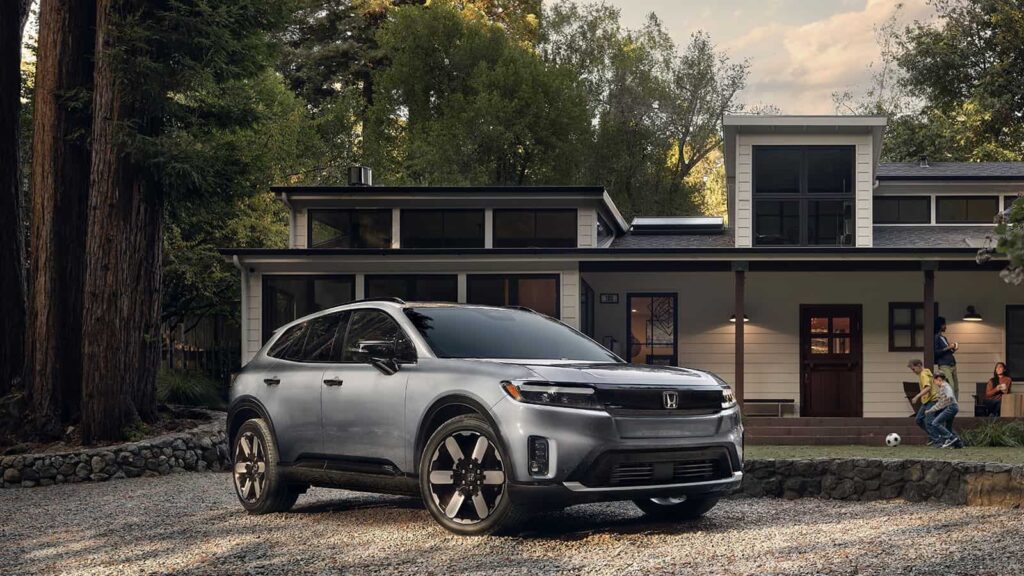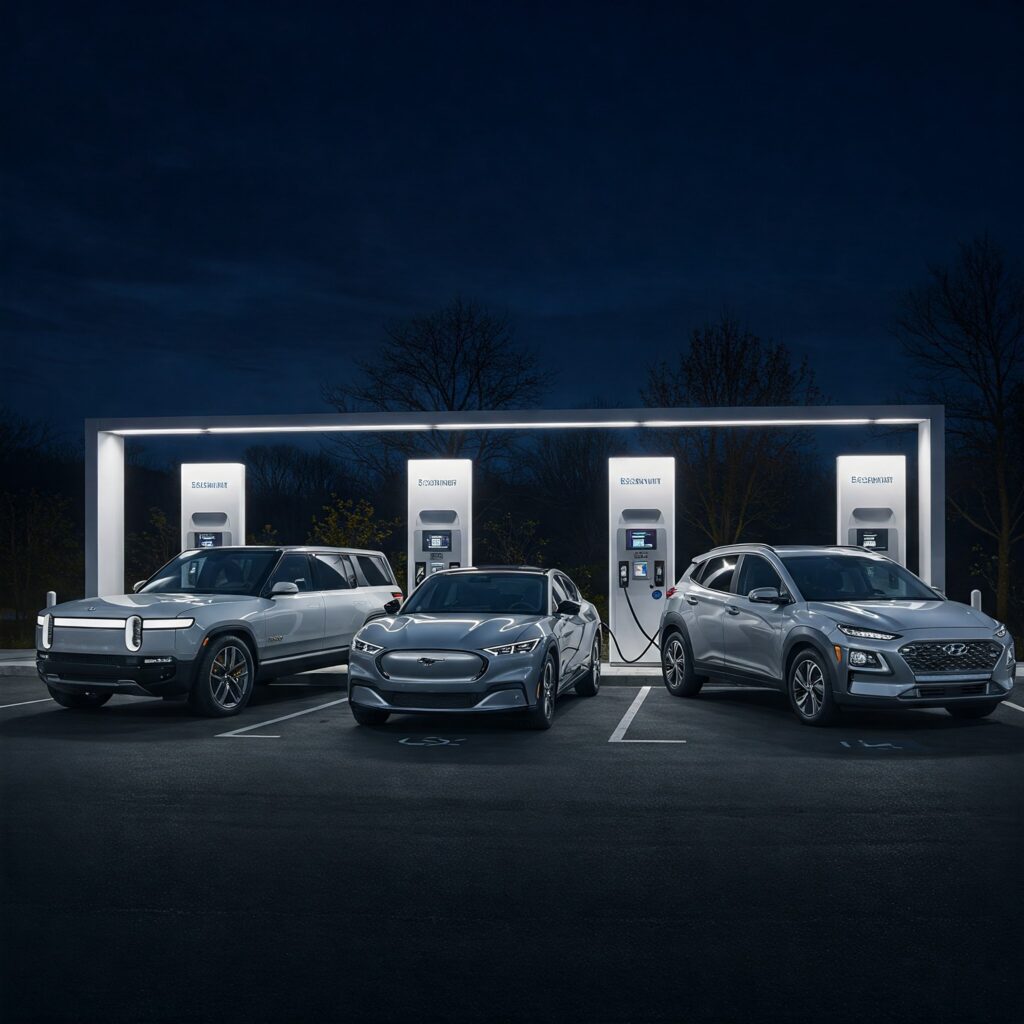Study Shows EV Purchase Consideration Holding Steady
It’s remarkable that the global economic chaos set off by the unnecessary tariffs has not decreased the desire of American consumers to switch from internal combustion engine (ICE) vehicles to fully battery electric vehicles (BEVs) or gas-electric hybrids.
CNBC reported that U.S. consumers are becoming increasingly worried that the unnecessary tariffs will lead to higher inflation, according to a University of Michigan survey released last week. The index of consumer sentiment dropped to 50.8, which is down from 52.2 in April, in the preliminary reading for May. That is the second-lowest reading on record, after June 2022.
On May 15, 2025, J.D. Power released its 2025 U.S. Electric Vehicle Consideration (EVC) Study, offering fresh insights into consumer sentiment around EV adoption. Despite a rapidly evolving automotive landscape, overall interest in electric vehicles remains unchanged from a year ago. According to the study, 24% of vehicle shoppers say they are “very likely” to consider an EV, while 35% are “somewhat likely.”
“Despite the market volatility, EVs have found a solid ground for consumer consideration,” said Brent Gruber, executive director of the EV practice at J.D. Power. “To further capitalize on that interest and spur adoption moving forward, the industry needs to have products that meet consumer needs and wants at prices that are affordable. Additionally, the industry should better educate consumers about EV ownership to ease concerns—many of which, such as those related to public charging, are less problematic than they might seem when it comes to actually owning an EV.”

EV Shoppers Are Active Brand Explorers
EV-intending consumers are broadening their horizons when it comes to cross-shopping. Those who are “very likely” to purchase an EV are researching an average of 2.9 different brands, while “somewhat likely” shoppers check out 2.8 brands. This trend, consistent with the 2024 J.D. Power U.S. Sales Satisfaction Index Study, reflects growing consumer curiosity as more EV models come to market.
“As more EV options come to market, this should serve as an encouraging sign for automakers because it’s an opportunity for them to gain a foothold and pull shoppers from outside their brands,” said Stewart Gruber, senior director of automotive retail at J.D. Power.
Charging Infrastructure Still a Roadblock
While concerns around purchase price and ownership costs are declining, infrastructure remains a critical hurdle. Over half (52%) of shoppers cite charging station availability as a primary reason for rejecting EVs. In contrast, the percentage of shoppers deterred by upfront costs dropped 4 points to 43%, and cost of ownership concerns fell to 33%—a sign that awareness of long-term savings may be improving.

A Gap Between Enthusiasm and Affordability
Younger shoppers (aged 25-49) continue to show the strongest interest in EVs, but often lack the financial means to purchase them. Only 17% of these consumers have an annual income above $100,000. This divide underscores the growing need for affordable EV options and creative financing solutions.
“Much of the recent growth in the EV space has been fueled by products from mass market brands, which demonstrates the pent-up demand for more affordable products,” Gruber added.
Regional Disparities: The Midwest Lags Behind
Geography plays a major role in EV sentiment. States like Wisconsin and Kentucky (18%), Minnesota (17%), and Ohio (16%) report the lowest share of consumers “very likely” to consider an EV. Factors such as cold weather performance and brand loyalty to legacy automakers are shaping this resistance.
EVC Study in its Fifth Year
Now in its fifth year, the J.D. Power U.S. Electric Vehicle Consideration Study has become an industry benchmark, measuring sentiment across regions, demographics, and buyer profiles. This year’s survey includes feedback from over 8,000 consumers who plan to buy or lease a vehicle in the next 12 months and was conducted between January and April 2025.
ZappyRide: Powering the Transition to EVs
As electrification continues to reshape the auto industry, J.D. Power’s ZappyRide division offers the tools needed to navigate this complex transition. From APIs and widgets to dashboards and consumer engagement tools, ZappyRide solutions are designed to simplify EV adoption for both consumers and fleets. Zappyride’s advanced analytics, software integrations, and data-driven insights support automakers, dealers, and energy providers as they accelerate the EV journey. Whether you’re a brand seeking new buyers or a fleet operator evaluating cost-efficiency, ZappyRide helps you stay ahead of the curve.
EVinfo.net’s Take
It’s very clear that right now is the time to go electric if you’re considering a new or used vehicle purchase or lease, especially if you are a home or business owner.
Multifamily dwellers and those who live in states or rural areas where EV charging is still scarce, may need to consider hybrids as an interim solution. If you choose a hybrid, be sure its a plug-in electric vehicle (PHEV), as these are more cost-effective and eco friendly than HEVs (hybrid electric vehicles). HEVs are basically gas vehicles with a battery acting as a range extender. On HEVs the battery can’t be recharged by the driver as there’s no plug.
Automotive prices are expected to go through the roof as yet another campaign promise has been broken. Reuters reported that Prices on the Ford Mustang Mach-E electric SUV, Maverick pickup and Bronco Sport will increase by as much as $2,000 on some models due to the unnecessary tariffs. Many more automakers are expected to follow suit.
We urge that Americans make their vehicle purchases or leases sooner than later, to save money. EVinfo.net recommends fast, fun, reliable and high-quality EVs by Ford, Hyundai/Kia, Rivian, BMW, Mercedes-Benz, GM, Porsche, Volkswagen, Lucid Motors, Audi, Mini Cooper, Polestar, Volvo, Jeep, and Honda.

Electric Vehicle Marketing Consultant, Writer and Editor. Publisher EVinfo.net.
Services